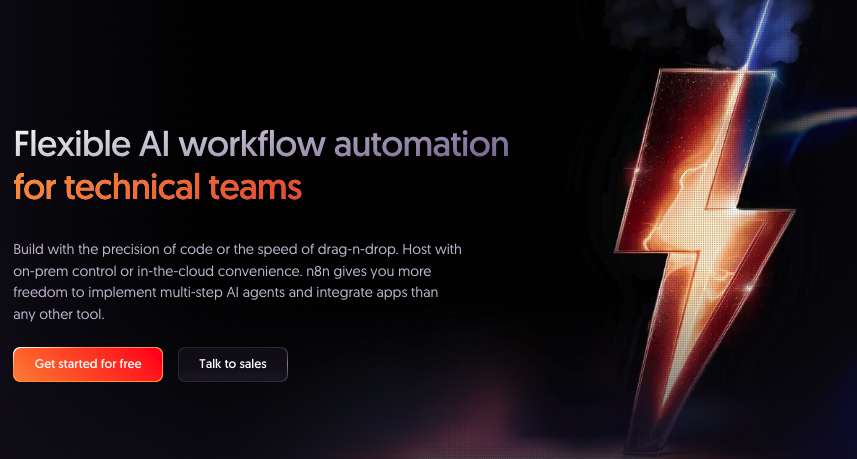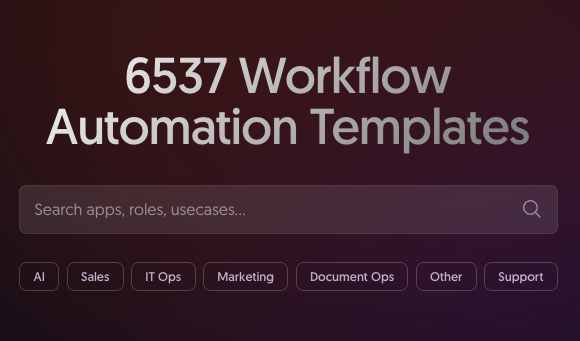What started as an automation platform is now being leveraged by developers and teams to create complete backend solutions for their applications. But is n8n the right choice for your next project?
This blog explores the advantages and challenges of using n8n as your backend solution. We'll dive into real world use cases, examine the pros and cons, and help you determine when n8n makes sense versus when you should stick with traditional backend approaches.

n8n is an open source workflow automation platform that allows you to connect different services and automate tasks. While traditionally used for automation workflows, many developers are now leveraging n8n as a backend for their applications.
Traditionally, backends are built using programming languages like JavaScript, Python, Java, or Go, running on servers with frameworks like Express, Django, or Spring Boot. n8n takes a different approach by using visual workflows instead of code. Think of it as a visual programming language for your backend logic.
Instead of writing functions and handling HTTP requests in code, you visually connect nodes in n8n to create workflows that handle data, call APIs, interact with databases, and respond to requests. Each node represents an action like "Get data from database," "Transform JSON," or "Send HTTP response."
Many teams are successfully using n8n in production for various backend scenarios:
Content Management Systems: Automating content publishing workflows, handling webhooks from CMS platforms, and processing media uploads. Small teams building custom CMS solutions for clients often use n8n to create custom API endpoints without extensive development.
E commerce Integrations: Connecting online stores with inventory management systems, automating order processing, handling payment webhooks, and syncing customer data across platforms. Shopify, WooCommerce, and other platforms integrate seamlessly with n8n.
Data Pipelines: Collecting data from multiple sources, transforming and cleaning it, then storing it in databases or data warehouses. This is particularly useful for business intelligence dashboards and reporting systems.
Automated Workflows: Building custom automation for internal tools, such as employee onboarding systems, document processing, or notification systems that aggregate information from multiple services.
Prototype APIs: Quickly building proof of concept APIs for testing business ideas before committing to a full backend development. Startups often use n8n to validate product market fit with minimal engineering resources.
Legacy System Integration: Connecting old systems that don't have modern APIs by creating middleware layers that transform data between different formats and protocols.
These use cases highlight n8n's strength in integration heavy applications where much of the backend logic involves connecting different services and transforming data between them.

1. Rapid Development and Prototyping
n8n's visual workflow editor eliminates the need to write extensive boilerplate code. You can create APIs, handle data transformations, and integrate with services quickly through a drag and drop interface. This significantly reduces development time for prototypes and MVPs.
2. Built in Integrations
n8n comes with hundreds of pre built integrations for popular services including databases (PostgreSQL, MySQL, MongoDB), cloud providers (AWS, Google Cloud, Azure), SaaS platforms (Slack, Stripe, Shopify), and more. These integrations handle authentication and API complexities automatically.
3. No Code to Low Code Backend
For teams without extensive programming experience, n8n provides a no code solution for building backend functionality. This democratizes backend development and allows business users to create workflows themselves.
4. Flexible Data Processing
n8n excels at data transformation, aggregation, and processing. Its workflow editor makes it easy to manipulate data from multiple sources, apply business logic, and format responses. The visual representation helps teams understand data flow.
5. Built in HTTP Request Handling
Each workflow can be exposed as a webhook endpoint, making it easy to create RESTful APIs. You can handle GET, POST, PUT, DELETE, and other HTTP methods directly within workflows without setting up a web server.
6. Self Hosted Option
Since n8n is open source, you can self host it, giving you full control over your data and infrastructure. This is particularly valuable for organizations with strict security and compliance requirements.
7. Version Control for Workflows
n8n workflows can be exported as JSON files, allowing you to version control your backend logic just like traditional code. This enables collaboration and deployment across environments.
8. Cost Effective for Simple Use Cases
For small to medium applications, n8n can be more cost effective than maintaining a traditional backend. The self hosted option removes subscription costs, and the reduced development time translates to lower development costs.

1. Performance Limitations
Workflow based execution can be slower than compiled code, especially for computationally intensive operations. Complex workflows with many nodes can introduce latency that traditional backends might avoid.
2. Limited Debugging Capabilities
While n8n provides some debugging tools, they're not as powerful as traditional debugging environments. Troubleshooting complex workflows can be challenging compared to debugging code with proper breakpoints and logs.
3. Scalability Concerns
n8n workflows can struggle with high concurrency and large scale applications. The execution model and single node architecture may not handle thousands of simultaneous requests as efficiently as traditional backends with load balancing and microservices architecture.
4. Complex Logic Limitations
While n8n handles common operations well, implementing complex algorithms or business logic can become cumbersome. Nested conditionals, complex loops, and advanced data structures are better suited to traditional programming languages.
5. Vendor Lock In
While workflows can be exported, migrating complex n8n workflows to other platforms is challenging. This creates a form of vendor lock in where your business logic is tightly coupled to the n8n platform.
6. Team Skill Requirements
Your team needs to learn the n8n platform and its specific patterns. This is different from traditional programming and may require training. Additionally, finding developers with n8n experience can be more difficult than finding developers with JavaScript or Python experience.
7. Testing Challenges
Testing n8n workflows comprehensively can be difficult. While you can test individual workflows, implementing unit tests, integration tests, and end to end tests is not as straightforward as with traditional code based backends.
8. Limited Custom Extensions
While n8n allows for custom nodes and code execution, extending functionality is more limited compared to traditional backends. You're often constrained by what the platform offers.
9. Deployment Complexity
Deploying and managing n8n in production requires understanding the platform's deployment options, scaling strategies, and monitoring. This can be more complex than deploying simple backend services.
10. Data Consistency and Transactions
Managing data consistency and transactions across multiple services can be challenging with workflow based approaches. Traditional backends with database transactions offer more reliable guarantees for data integrity.

Consider n8n if:
Consider traditional backend if:
n8n as a backend presents an interesting trade off between development speed and flexibility versus performance and scalability. It excels in rapid prototyping, integrations, and no code development, but may struggle with complex applications at scale.
The decision to use n8n depends on your specific requirements, team expertise, and long term goals. For many applications, n8n can serve as an excellent starting point, with the option to migrate to traditional backends as needs evolve.
Are you navigating a career in software engineering or engineering management? Whether you're just starting out, switching careers, or aiming for that next promotion, having a mentor can accelerate your growth.
I offer software engineering and engineering management mentorship, helping engineers develop both technical and non technical skills. From bootcamp grads to those seeking leadership roles, let's talk about how mentorship can help you reach your goals faster.
Ready to level up your career? Book a free intro call with me on MentorCruise and let's discuss how I can support your journey.
Find out if MentorCruise is a good fit for you – fast, free, and no pressure.
Tell us about your goals
See how mentorship compares to other options
Preview your first month
